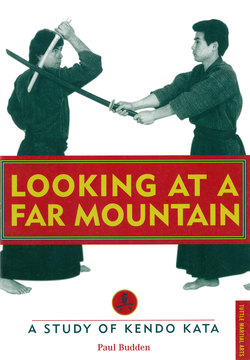Читать книгу Looking at a Far Mountain - Paul Budden - Страница 8
На сайте Литреса книга снята с продажи.
ОглавлениеPREFACE
As a Kendo friend of the author, Mr. Paul Budden, since our first meeting in 1983, on occasion of the Kendo Summer Camp organized by the All Japan Kendo Federation for kendoists abroad, I am very happy to be granted a chance to write some comments in order to celebrate his book on Kendo-kata.
I am convinced that readers will find many important things, not only technical clues for practising Kata correctly, but also the historical facts which will be of great help to understand how the essence of Kata was established into ten forms as it is now.
We Japanese are taught to follow three steps when learning Budo, (martial ways), Sado (tea ceremony), Kado (flower arrangement) or any kind of traditional arts. It is 守 (shu, obeissance to Kata or what is taught by Sensei), 破 (ha, literally the destruction of it, but we may safely say it is the stage of individualization or digestion of Kata or what is taught) and 離 (ri, separation from it but always on the correct way without thinking or trying to be so).
The first step for us to master Kendo is to learn and practice Kihon (the fundamentals); Suburi (swing with a Shinai). Ashisabaki (footwork), Kamae (postures), and Tenouchi (grip of a Shinai). To repeat Kihon is an attempt, in other words, to put oneself into a Kata following in perfect obedience to one’s Sensei. You may find it uncomfortable and constrained to follow the Kata at first, but once you master it, you will get to know the fact that to be in Kata is very comfortable, and that the Kata is not in the least restrictive but even very creative.
I sincerely hope that readers of this book will practice Kata repeatedly until you can find by experience that Kata is very profitable for your Kendo both mentally and technically.
Associate Professor of Saitama University International Committee Member of All Japan Kendo Federation,
Sasaburo Takano and Hakudo Nakayama from the Budo Hokan-Showa-Ten Ran Shiai Huroku Dai Nihon. Yuben Kai 1930
